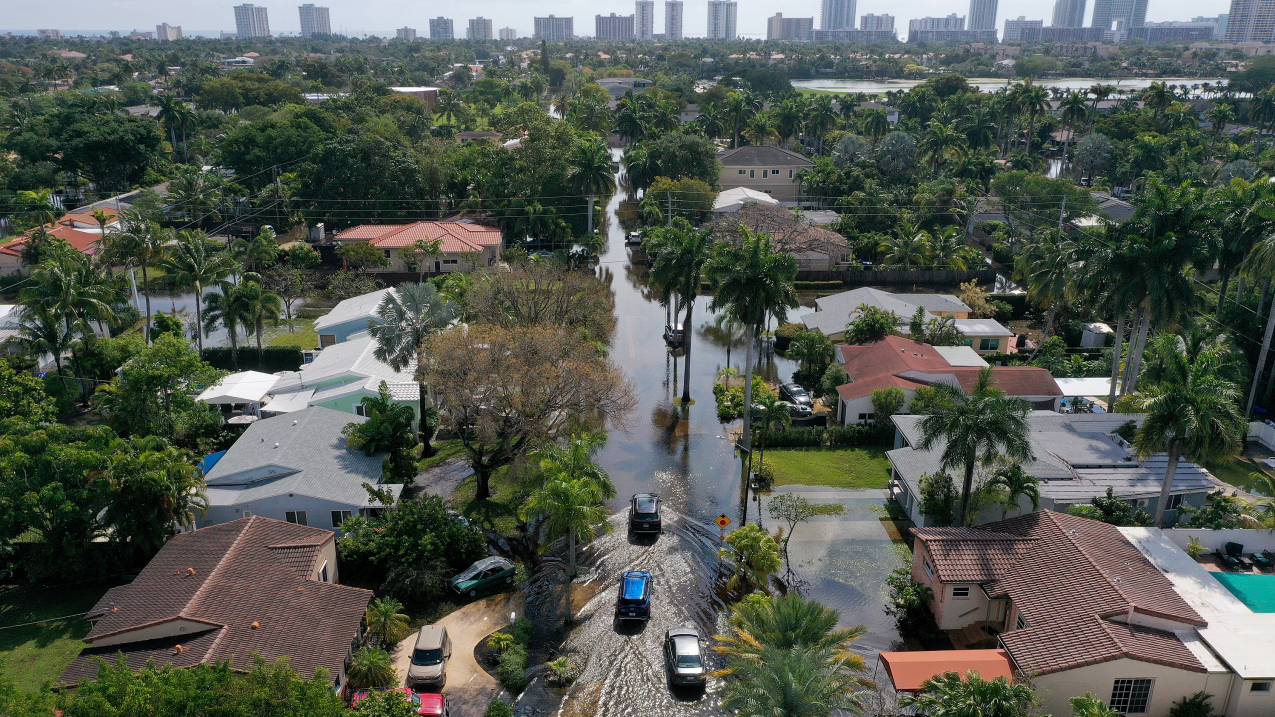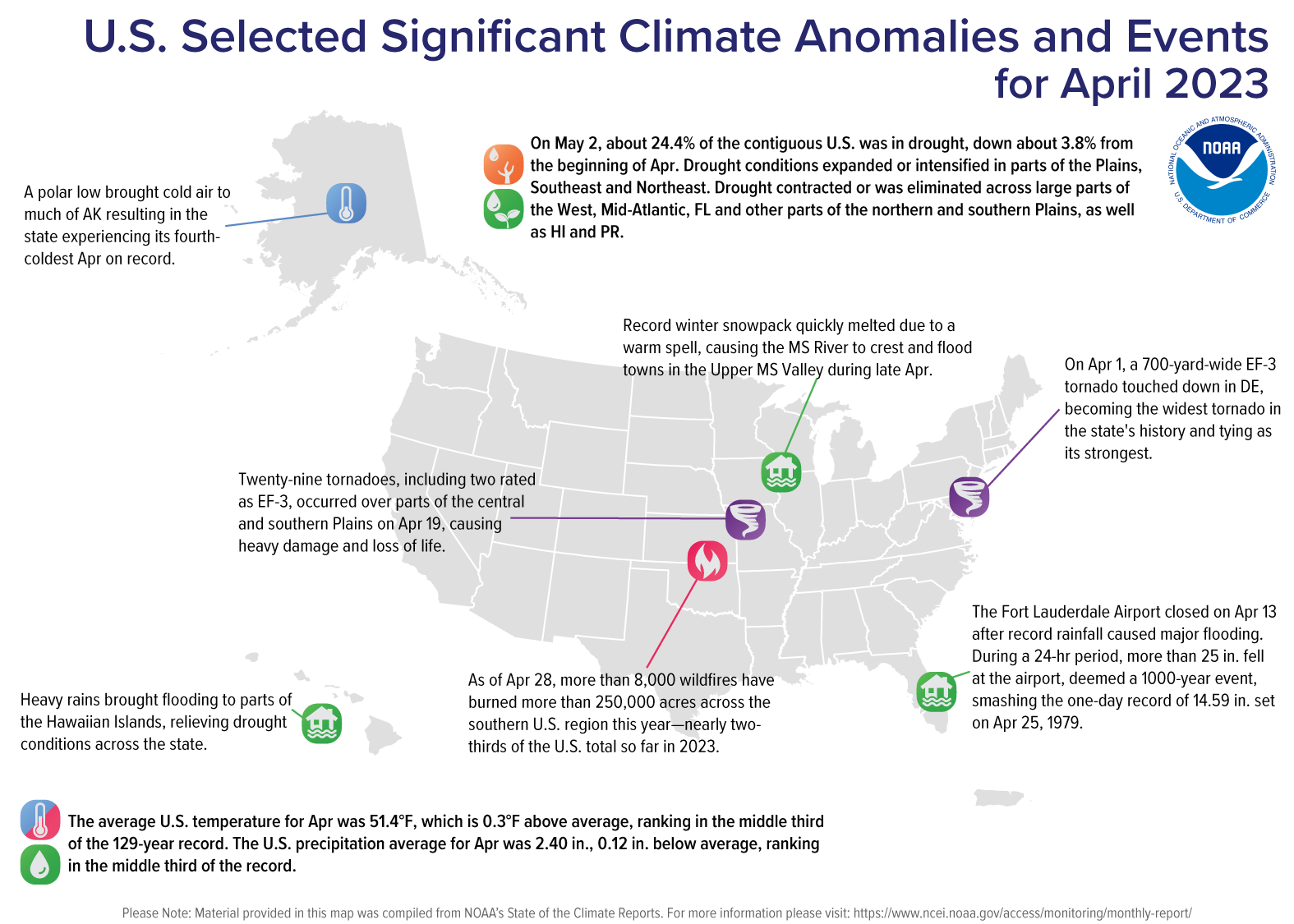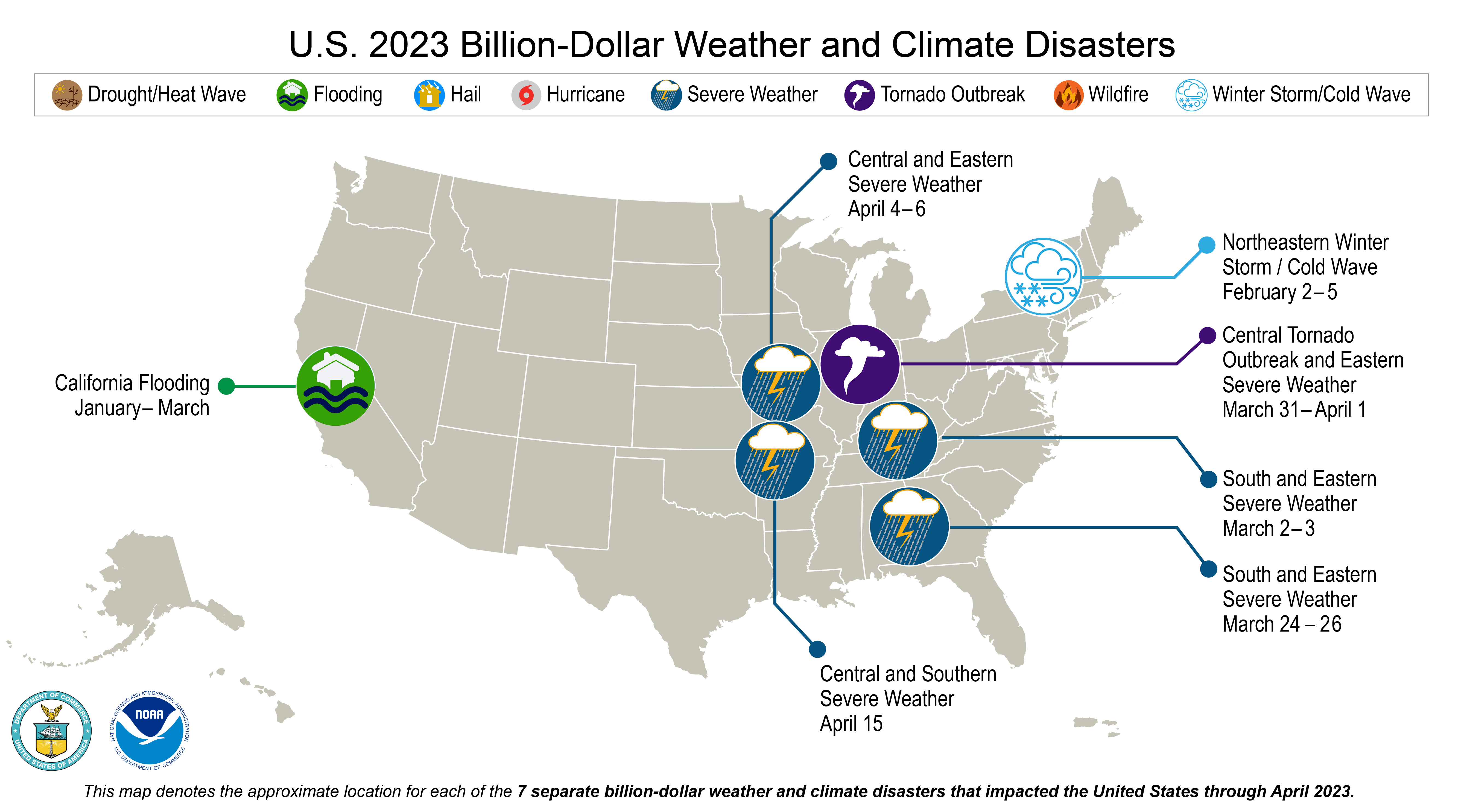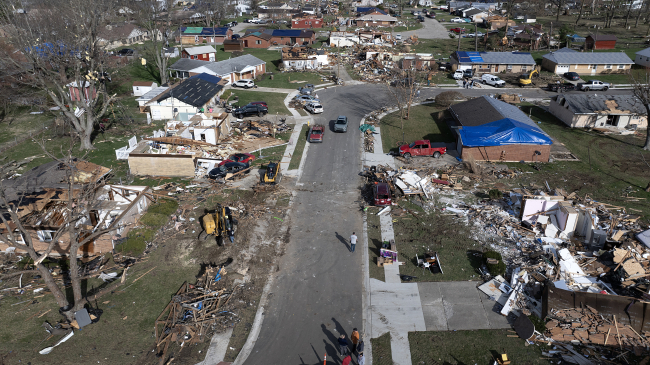7 separate billion-dollar disasters have struck the nation

In this aerial view, cars navigate through flooded streets after record rains fell in the area on April 13, 2023, in Hollywood, Florida. In Fort Lauderdale, this 1,000-year rain event smashed the previous one-day record of 14.59 inches of rainfall set on April 25,1979. (Image credit: Joe Raedle/Getty Images)
So far, 2023 stands out for the remarkable warmth that covered many parts of the U.S., with some states seeing their warmest January–April period on record.
The first four months of the year have also been marked by seven separate billion-dollar disasters that have struck the nation, according to scientists from NOAA’s National Centers for Environmental Information.
Below are more takeaways from NOAA’s latest monthly U.S. climate report:
Climate by the numbers
April 2023
The average April temperature across the contiguous U.S. was 51.4 degrees F (0.3 of a degree above the 20th-century average), ranking the month in the middle third of the 129-year climate record.
Maryland and Delaware ranked second warmest on record for April while New Jersey ranked third warmest on record. Connecticut, Florida, Massachusetts, New Hampshire, New York, Pennsylvania, Rhode Island, Vermont and Virginia each saw their top-10 warmest Aprils on record.
Conversely, below-average temperatures covered the Northwest to the central Rockies and northern Plains, and parts of the southern Plains. North Dakota ranked 10th coldest on record for the month.
The average precipitation for the month was 2.40 inches — 0.12 of an inch below average, which places the month in the middle third of the historical record.
Arizona, Missouri, Nebraska and New Mexico saw their third-to-sixth driest Aprils on record, respectively. Meanwhile, Delaware ranked seventh wettest, North Carolina eighth wettest and New Jersey saw its 10th-wettest April on record.

Year to date | January through April 2023
The average U.S. temperature for the year to date (YTD) was 40.9 degrees F (1.8 degrees above average), ranking in the warmest third of the climate record.
Delaware, Florida, Maryland, New Jersey, North Carolina, Pennsylvania and Virginia each had their warmest January–April YTD on record. Connecticut, Massachusetts, New Hampshire, New York, Rhode Island, South Carolina and West Virginia each had their second-warmest such YTD, while 14 additional states ranked among their warmest 10 January-to-April periods on record.
The average precipitation for the first four months of 2023 was 10.22 inches (0.74 of an inch above normal), ranking in the wettest third of the January–April record.
Wisconsin saw its wettest such YTD on record, while Michigan ranked fourth wettest and Utah ranked seventh wettest. On the dry side, Maryland ranked 13th driest on record for this four-month period.
Other notable climate events in this report
Seven separate billion-dollar disasters struck this year: Through the end of April 2023, the U.S. was struck with seven separate weather and climate disasters, each with losses exceeding $1 billion, including:
- Five severe weather events.
- A Northeastern winter storm/cold wave.
- A California flooding event.
The total cost of these events exceeds $19 billion and resulted in 97 direct and indirect fatalities. The number of billion dollar disasters so far in 2023 is significant. Only 2017 and 2020 had more during this timeframe, with eight separate disasters recorded in the January-April period.

An active severe weather month: Several notable weather systems produced severe thunderstorms and a number of tornadoes that impacted portions of the U.S. in April 2023:
- April 1: A 700-yard-wide EF-3 tornado that touched down in Delaware was the widest tornado in the state's history. The same tornado was equal in strength to one that struck Delaware on April 28, 1961— the strongest tornadoes recorded in the state.
- April 19: A tornado outbreak occurred across areas of the southern and central Plains. A total of 29 tornadoes, including two EF-3 tornadoes, was confirmed by the National Weather Service, causing heavy damage and loss of life.
- April 30: A state of emergency was declared after a rare EF-3 tornado touched down in Virginia Beach, destroying more than 100 structures.
Parts of Florida inundated with flooding: In less than a 24-hour period, more than 25 inches of rain fell at the Fort Lauderdale Airport on April 13. The event, deemed a 1,000-year event by the National Weather Service, smashed the previous one-day record of 14.59 inches of rain set on April 25, 1979.
More > Access NOAA’s latest climate report and download the images.
Media contact
John Bateman, (202) 424-0929



